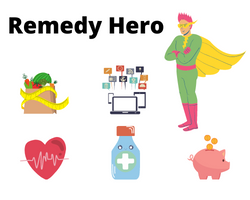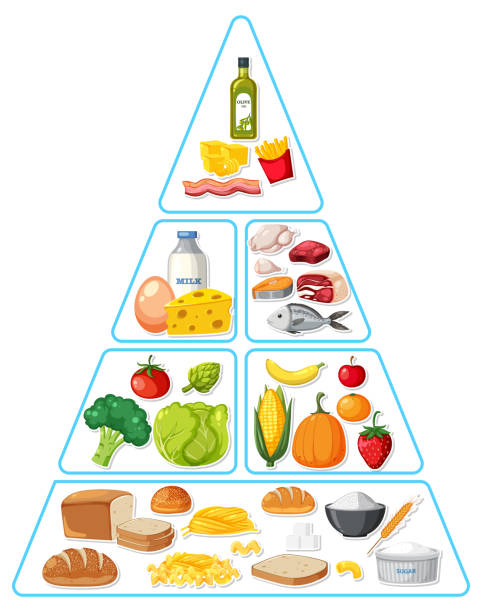Elimination Diet Pros and Cons: What’s the Deal?
Thinking about starting an elimination diet but not sure if it’s right for you? This type of diet can help you identify food intolerances and sensitivities by cutting out certain foods and gradually reintroducing them. Understanding the Elimination Diet pros and cons can help you decide if the effort to pinpoint problem foods is worth it. You’ll need to stick to the diet for one to two months, but the potential benefits include relief from troublesome symptoms and better overall health.

Besides uncovering food sensitivities, elimination diets can also reveal underlying food allergies. These reactions can range from mild discomfort to severe allergies like anaphylaxis. By systematically removing and then adding back foods, you can track which ones are causing issues. Resources from the Cleveland Clinic, Forbes, and Healthline discuss the steps to follow and the types of elimination diets available.
Some challenges with elimination diets include sticking to the strict food lists and the potential for missing out on certain nutrients. It’s crucial to have a well-structured plan to ensure you get all the necessary nutrients. Consulting with a healthcare provider can help guide you through the process and ensure you are doing it safely.
Key Takeaways
- Elimination diets can help identify food intolerances, sensitivities and pinpoint problematic food.
- They involve cutting out specific foods for one to two months.
- The diet can uncover both mild and severe food allergies.
- Always speak with a health care provider when eliminating entire food groups that are suspect.
Understanding Elimination Diets
Elimination diets help you identify foods that might be causing health issues. They involve removing specific foods and then slowly reintroducing them to see how your body reacts.
What Is an Elimination Diet?
An elimination diet is a short-term eating plan used to pinpoint food intolerances or allergies. You start by removing foods that are commonly problematic, such as dairy, gluten, nuts, and soy. After a set period, you gradually reintroduce these foods one at a time. This helps you figure out which foods are causing issues like digestive problems or allergic reactions.
Trigger foods can vary from person to person. Common symptoms of food intolerance or allergies include bloating, gas, headaches, and skin issues. If a food causes a reaction during the reintroduction phase, it might be best to avoid it in the future.
Types of Elimination Diets
There are several types of elimination diets tailored for different needs. The Low FODMAP diet is aimed at those with irritable bowel syndrome (IBS). It targets certain carbohydrates known to cause digestive distress.
Another is the GAPS diet, which stands for Gut and Psychology Syndrome. This diet is more restrictive and focuses on healing the gut lining, which may help with conditions like leaky gut syndrome.
There’s also a basic elimination diet that involves removing common allergens like dairy, gluten, and soy. After the removal phase, you carefully reintroduce foods to identify which ones you can or cannot tolerate.
Potential Benefits
An elimination diet can help you find out which foods are causing problems like digestive issues and inflammation. It might also make your symptoms of irritable bowel syndrome (IBS) more manageable.
Identifying Food Intolerances
One big benefit of an elimination diet is that it lets you figure out your food intolerances. By cutting out certain foods and slowly adding them back, you can see which ones cause issues like bloating, gas, or headaches.
Knowing your food triggers helps you avoid them and feel better. This approach is physician-recommended for accurately identifying foods that don’t agree with your body, especially when other methods fail. It’s a simple way to understand which foods to keep in your diet and which to skip.
Improving Symptoms of IBS
Irritable bowel syndrome (IBS) can be tough to manage. But an elimination diet can improve your symptoms. You might see a reduction in abdominal pain, bloating, and irregular bowel movements. Many people find that their digestive health gets better when they avoid trigger foods.
This method focuses on pinpointing and excluding foods that worsen IBS. This way, you can enjoy meals without worrying about the usual discomfort. It’s a practical way to take control of your symptoms and feel more at ease daily.
Reduction in Inflammatory Markers
Inflammation is often at the root of many health problems. An elimination diet may help lower inflammatory markers in your body. By removing certain foods, you can reduce symptoms like joint pain, fatigue, and skin issues.
Research supports that specific food triggers can lead to inflammation. By figuring out and avoiding these foods, you improve your overall well-being. This makes an elimination diet a useful tool for managing chronic conditions worsened by inflammation.
Common Challenges
Starting an elimination diet comes with many hurdles. You’ll need to carefully plan your meals and may face challenges in social settings.
Designing the Diet
One big challenge is planning your meals. You’ll need to avoid certain foods for several weeks. Finding replacements for common allergens like gluten, dairy, and soy can be tricky. It might feel overwhelming to check labels and plan balanced meals without these ingredients.
Mistakes can happen. Accidentally eating a restricted food might set you back. To avoid this, you may need a detailed food journal. Write down everything you eat and any symptoms you notice. This helps you track progress and pinpoint problem foods.
Another part of planning is shopping for groceries. Specialty foods replacing allergens can be hard to find or expensive. You might spend extra time in stores or need to visit multiple locations to get everything you need.
Social and Lifestyle Limitations
Following an elimination diet can limit your social life. Eating out at restaurants becomes challenging. Many places might not have menu options that fit your restrictions. You may need to ask about ingredients, which can be awkward or inconvenient.
Social events like parties or family gatherings can also be tough. Food is often a central part of these occasions, and you might not be able to enjoy what others are eating. Bringing your own food or eating beforehand can help, but it can make you feel isolated.
Travel can add another layer of difficulty. Finding compliant foods at airports or on the road may require extra planning. Packing your own snacks can be a real lifesaver.
In summary, an elimination diet requires careful planning and can affect your social life, but overcoming these challenges is key to discovering food sensitivities.
Risks and Considerations
When doing an elimination diet, it’s important to think about potential health risks and emotional effects. Nutritional deficiencies and psychological impacts can occur.
Nutritional Deficiencies
Elimination diets often remove key food groups, which can lead to nutritional deficiencies. For example, cutting out dairy might mean losing a main source of calcium and vitamin D. Without proper planning, missing out on these nutrients can affect bone health.
If you stop eating grains, you might miss out on important fiber. This can lead to digestive issues. You may also lose certain B vitamins and other nutrients that keep your body running smoothly.
Psychological and Emotional Well-being
Following an elimination diet can be physically taxing and emotionally challenging. You might feel more anxious about food choices, which can lead to stress and worry during meals. Social situations, like dining out, can also become difficult.
Some people may experience feelings of isolation or deprivation. It’s important to speak with a healthcare professional or registered dietitian to manage these emotions and ensure you’re still getting necessary nutrients. This can help make the diet more effective and less stressful.
Executing the Elimination Diet
Understanding the elimination and reintroduction phases is key to successfully executing an elimination diet. This process helps you identify food intolerances by removing and then reintroducing certain foods.
Initial Phase: The Elimination
In the elimination phase, you remove foods that are common triggers for sensitivities. This phase typically lasts 2 to 4 weeks. You need to avoid foods like gluten, dairy, soy, and nuts.
During this phase, keeping a food diary can be helpful. Note any symptoms you experience. This documentation will be crucial as you move into the next phase.
It’s important to stay committed. Slipping up can make it hard to identify the foods causing issues. Make sure to read labels and avoid eating out, as hidden ingredients can sneak in.
Reintroduction Phase: Finding the Culprits
After the elimination phase, you begin reintroducing foods one at a time. This phase is where you identify which foods are causing your adverse reactions. Introduce each food group back into your diet for 3 days. Note any symptoms that occur.
If symptoms return, remove that food and try another. If no symptoms appear, that food is likely safe for you.
You might consider working with a registered dietitian. They can help you navigate this phase and provide additional support. The goal is to find a balanced diet that avoids your trigger foods while still providing necessary nutrients. Avoiding the food that causes reactions will help you feel your best.
Dealing with Specific Food Eliminations
When you decide to try an elimination diet, the main goal is to identify which foods cause issues. This often means removing specific food groups from your diet temporarily and then reintroducing them to see how your body reacts.
Handling Dairy and Lactose
Eliminating dairy can be challenging since it’s in many everyday foods like milk, cheese, and yogurt. Start by replacing these items with lactose-free or plant-based alternatives such as almond milk, soy yogurt, or cashew cheese.
Watch out for hidden dairy in processed foods. Always read labels carefully. If you have a lactose intolerance, you may experience fewer symptoms like bloating or gas when you avoid dairy. For those with a dairy allergy, strictly avoiding all dairy products is crucial to prevent allergic reactions. Taking calcium and vitamin D supplements can help maintain bone health while avoiding dairy.
Gluten and Wheat Products
Gluten is found in wheat, barley, and rye, making it common in bread, pasta, and cereals. To avoid gluten, you’ll need to find replacements like rice, quinoa, and gluten-free flours. Foods like fruits, vegetables, and lean meats are naturally gluten-free and can be staples in your diet.
Look for products labeled gluten-free to avoid cross-contamination. This is especially important if you have celiac disease because even small amounts of gluten can cause health issues. Restaurants now often offer gluten-free options, but always inform the staff about your need to avoid gluten to minimize risk.
Other Common Allergens
Other common food allergens include eggs, soy, peanuts, tree nuts, fish, and shellfish. Start by avoiding these foods completely and look for alternatives in your diet. For example, use flaxseed or chia seeds as egg substitutes in baking. Almond or coconut milk can replace soy milk.
Reading ingredient labels is critical to avoid these allergens. Many processed foods contain traces of these common allergens. For severe allergies, be cautious about cross-contact in cooking utensils and surfaces. Keeping an epinephrine auto-injector can provide peace of mind if you have a severe allergy.
You can find more information about each allergen and their substitutes on various health websites and forums to stay informed and safe.
Support and Guidance
Getting the right support and using tools like food diaries can make your elimination diet more effective and easier to manage.
Consulting Health Professionals
Talking to a medical professional like a doctor or an allergist is really important when starting an elimination diet. They can help you understand which foods to cut out and how to reintroduce them safely. A registered dietitian can offer specific nutrition advice, ensuring you still get all the nutrients you need.
Some clinics even have specialized programs for elimination diets. These programs can provide you with meal plans and recipes that fit your needs. Don’t underestimate the value of these professional insights—they can help you avoid common pitfalls and mistakes.
Utilizing Food Diaries and Journals
Keeping a food diary is a powerful tool during an elimination diet. In your food journal, write down everything you eat, the time you eat it, and any symptoms you experience afterward. This will help you and your healthcare provider spot patterns and identify food sensitivities or allergies.
Make sure to be detailed in your entries. Note portion sizes, how the food was prepared, and even how you felt emotionally. Over time, this record will become an invaluable resource, helping to make clearer connections between foods and symptoms.
A simple notebook or a specialized app can both serve well for this purpose.
Living with Food Intolerances
Living with food intolerances and sensitivities can be challenging, but there are ways to manage your diet and adapt long-term. This helps you avoid uncomfortable symptoms and continue living a healthy life.
Nutritional Strategies
To handle food intolerances, you need to make smart dietary changes. Start by identifying foods that trigger symptoms, like dairy, gluten, or certain fruits. Keeping a food diary can help you spot these triggers.
Once you know your triggers, plan meals without those foods. Replace them with alternatives to ensure you’re still getting essential nutrients. For example, if you’re lactose intolerant, try almond milk or lactose-free cheese.
It’s also helpful to read labels carefully. Many processed foods contain hidden allergens. Look for phrases like “may contain” or “processed in a facility that also processes.” This extra vigilance can prevent accidental ingestion of trigger foods.
Consulting a dietitian might be a good idea too. They can provide personalized advice and suggest supplements if necessary. Nutrient deficiencies can occur if major food groups are eliminated, so their guidance is vital.
Long-Term Adaptations
Adapting to food sensitivities requires permanent changes to your lifestyle. It’s not just about avoiding certain foods; it’s about finding sustainable ways to enjoy meals and socialize.
Start by learning how to cook dishes that meet your dietary needs. Cooking at home gives you control over ingredients and reduces the risk of exposure to allergens. There are many online recipes designed for various intolerances, offering tasty and nutritious options.
When eating out, research restaurants that cater to specific dietary restrictions. Many places now offer gluten-free, dairy-free, and other allergen-free menus. Don’t hesitate to ask staff about food preparation methods to ensure your meal is safe.
Storage and preparation methods also need adjustments. Cross-contamination can be a problem in shared kitchens. Use separate utensils, cutting boards, and storage containers for allergen-free foods.
Joining support groups can also help. Sharing experiences and tips with others dealing with similar challenges can make the transition easier and less isolating.
Alternatives to Elimination Diet
If you are looking for different methods to identify food sensitivities or improve your digestive health, here are two effective alternatives.
Low FODMAP Diet
The Low FODMAP Diet focuses on reducing specific types of carbohydrates that can cause digestive issues. These carbohydrates are known as FODMAPs (Fermentable Oligosaccharides, Disaccharides, Monosaccharides, and Polyols).
Following a low FODMAP diet involves three main phases:
- Elimination: Remove high FODMAP foods from your diet for a period of time.
- Reintroduction: Gradually reintroduce these foods to identify which ones cause symptoms.
- Personalization: Find a balanced diet that includes only the foods that are safe for you.
Common high FODMAP foods include:
- Garlic and onions
- Wheat-based products
- Certain fruits like apples and pears
This diet can offer significant relief if you suffer from irritable bowel syndrome (IBS) or other digestive disorders. Just be sure to consult with a healthcare professional before making any dietary changes.
Using Technology and Apps
In today’s digital age, nutritional apps and food sensitivity testing can make managing your diet much easier.
Nutritional apps like MyFitnessPal or Cronometer help you track your food intake and identify potential problem foods. These apps often offer features like:
- Calorie counting: Helps you see how much you’re eating.
- Nutrient tracking: Ensures you’re getting essential vitamins and minerals.
- Food diaries: Lets you note any symptoms after meals.
Food sensitivity testing kits are another option. These kits test your blood or saliva for reactions to various foods. Some popular testing kits include:
Using technology can simplify the process and provide personalized guidance tailored to your needs. However, always double-check with a healthcare provider to ensure these tools are giving you accurate and safe advice.
Frequently Asked Questions
Curious about what you can eat, how long you should stick to an elimination diet, and if it might have any side effects? Read on to get clear, concise answers to common questions.
What can you eat on an elimination diet?
During an elimination diet, you generally focus on foods that are least likely to cause reactions. These include fruits, vegetables, and lean proteins like chicken or fish. Foods usually avoided are dairy, gluten, nuts, and soy. Always check with your healthcare provider to tailor the diet to your needs.
How is an elimination diet supposed to work?
You start by removing specific foods from your diet. Next, you monitor your body’s reaction to their absence. After a few weeks, you gradually reintroduce these foods one at a time. This helps you identify which foods might be causing symptoms like bloating or headaches.
What’s the usual duration for sticking to an elimination diet?
Typically, you stick to the elimination phase for about 1-2 months. It’s important to give your body enough time to clear any reactions. Once this phase is over, you slowly add back the eliminated foods to see how they affect you.
Could an elimination diet have any side effects?
Yes, there can be side effects. Some people might experience nutrient deficiencies if the diet isn’t well-balanced. Others might feel irritable or experience cravings for the foods they have removed. Always consult a healthcare provider to make sure you’re doing it safely.
Who should avoid trying an elimination diet?
Individuals with a history of eating disorders or those with specific medical conditions should avoid trying an elimination diet without professional guidance. Pregnant or nursing women should also be cautious. Always consult a healthcare professional before starting this or any restrictive diet.
How do you figure out if an elimination diet is actually helping?
Keep a detailed food diary. Note what you eat, and any symptoms you experience. This helps to pinpoint which foods might be causing issues. Improvements in symptoms like digestive discomfort or skin rashes usually indicate that the diet is working.




